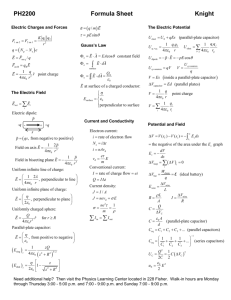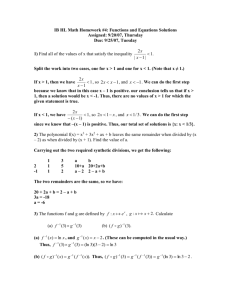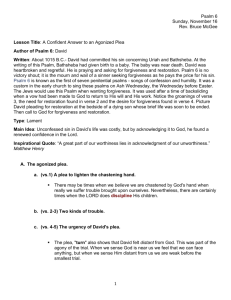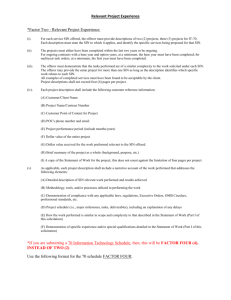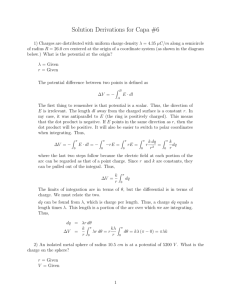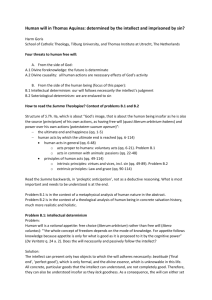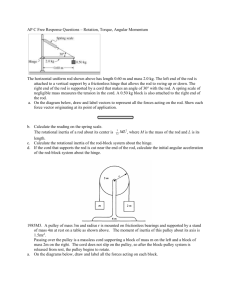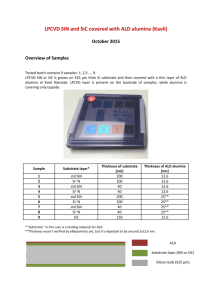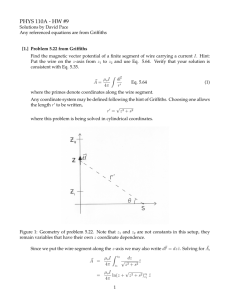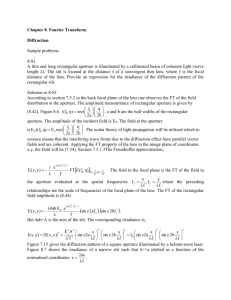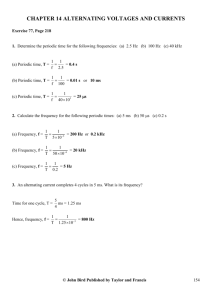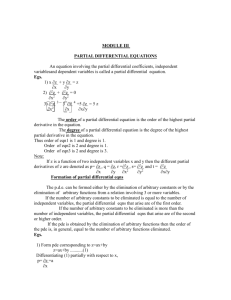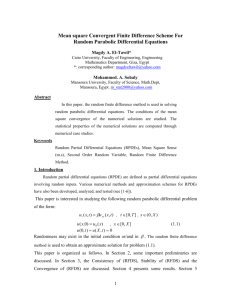Mid-Term-HOE-Solutions
advertisement
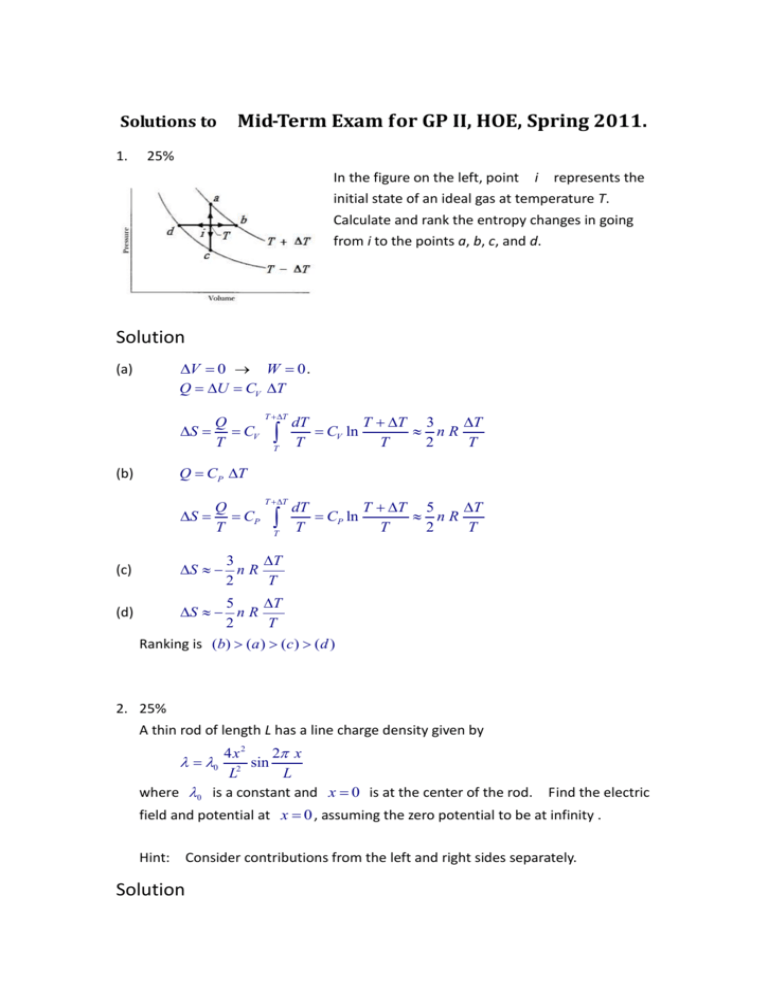
Solutions to 1. Mid-Term Exam for GP II, HOE, Spring 2011. 25% In the figure on the left, point i represents the initial state of an ideal gas at temperature T. Calculate and rank the entropy changes in going from i to the points a, b, c, and d. Solution V 0 W 0 . Q U CV T (a) Q S CV T T dT T T 3 T CV ln nR T T 2 T Q CP T (b) Q S CP T T T T dT T T 5 T CP ln nR T T 2 T 3 T S n R 2 T (c) (d) T T 5 T S n R 2 T Ranking is (b) (a ) ( c) ( d ) 2. 25% A thin rod of length L has a line charge density given by 4 x2 2 x sin 2 L L where 0 is a constant and x 0 is at the center of the rod. Find the electric 0 field and potential at x 0 , assuming the zero potential to be at infinity . Hint: Solution Consider contributions from the left and right sides separately. L /2 0 E k 2 dx 2 dx i x 0 L /2 x 0 L /2 4 2 x 2 x k 0 2 sin dx sin dx i L L /2 L L 0 Since 0 L /2 2 x 2 x dx sin dx L L 0 L /2 sin 8 E k 0 2 L L /2 sin 0 2 x 8 L 8 dx i k 0 2 i cos 1 i k 0 L L 2 L L /2 0 k dx dx x 0 L /2 x 0 L /2 4 2 x 2 x k 0 2 x sin dx x sin dx L L /2 L L 0 Since 0 L /2 3. 2 x 2 x dx x sin dx L L 0 L /2 x sin x 0 0 25% A solid sphere 10 cm in radius carries a uniform 40 C charge distribution throughout its volume. It is surrounded by a concentric shell 20 cm in radius, also uniformly charged with 40 C. Find the electric field at (a) 5.0 cm, (b) 15 cm, and (c) 30 cm from the center. Solution (a) A point at 5.0 cm is inside the solid sphere. Applying Gauss’ law gives 4 r 2 E 4 r 3 Q r 3 0 3 0 R3 E 9 109 40 106 0.05 0.1 3 E Qr Qr k 3 3 4 0 R R N/C 18 106 N/C (b) A point at 15.0 cm is outside the solid sphere but inside the shell. Ek Q 40 106 9 1.6 107 N/C 9 10 2 2 r 0.15 (c) A point at 30.0 cm is outside both the solid sphere and the shell. 40 40 10 Q E k 2 9 109 2 r 0.30 6 8 106 N/C 4. 25% An air-insulated parallel-plate capacitor of capacitance C0 is charged to voltage V0 and then disconnected from the charging battery. A slab of material with dielectric constant , whose thickness is essentially equal to the capacitor spacing, is then inserted a distance X into the capacitor (see figure). Determine (a) the new capacitance, and (b) the stored energy. Neglect all fringe effects. Solution (a) Each plate is an equipotential surface. E So the field between them is everywhere V , where d is distance between the plates. d left & right side are however different: E L R 0 0 Hence, the charge on the upper plate is The charge densities on the q L X R L X W X L X 0 E W The new capacitance is therefore C q W X L X 0 C0 V d where C0 0 LW d X 1 1 L is the original capacitance. (b) Since the battery is disconnected, q q0 . The stored energy is q02 U 2C where U0 q02 X 2C0 1 1 L U0 1 1 q02 is the original stored energy. 2C0 X L






